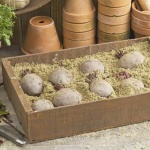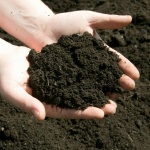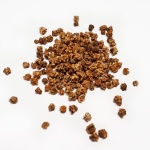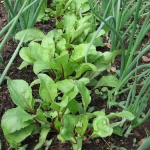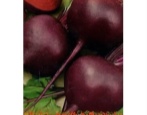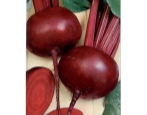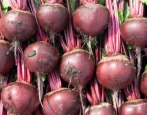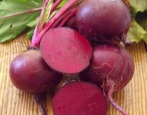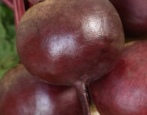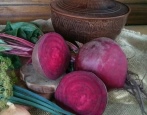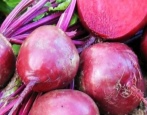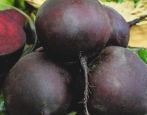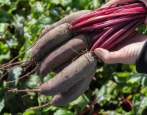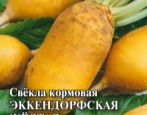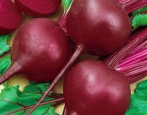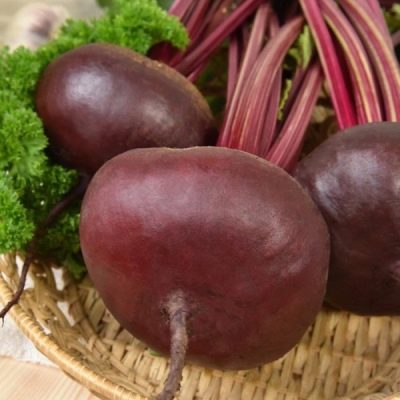
- Year of approval: 1943
- Leaf rosette shape: upright
- Leaves: dark green
- The form: flat
- Weight, g: 280-400
- Pulp color : dark red
- Ringiness: no ringing
- Taste qualities: good ones
- Appointment: for culinary processing, for canning, for fresh use
- Storage: suitable for winter storage
Egyptian flat beets are known to many. She is chosen for a number of positive qualities, among which there are unpretentious care and productivity.
Breeding history
Development of a new variety was started on the basis of the Voronezh Federal Scientific Center named after V.I. Dokuchaev in 1937. After all trials and tests were passed, in 1943 the culture was approved for use and entered into the State Register.
Description of the variety
Flat Egyptian beet belongs to table crops. She perfectly tolerates a short drought, as well as any adverse weather conditions. The crop gives a stable and good harvest.
The tops are resistant to flowers. The fruits have a pleasant and sweet taste, as well as attractive appearance and good keeping quality. Thanks to the dense skin, the beets can be transported over long distances.
The variety is resistant to most fungal diseases. The culture can tolerate severe frosts.
Among the minuses noted by gardeners, there is the fact that the seeds sometimes sprout for a long time. Because of this, inexperienced summer residents may think that the seeds were defective or empty.
Due to the high sugar content, root vegetables can be attacked by rodents. And also the variety is characterized by the fact that long-term storage is available only for large and resilient fruits. Small and medium ones most often dry out quickly or flabby.
Characteristics of the appearance of the plant and root crops
The tops are erect with small rosettes of leaves. The height of the bush is 40-50 cm. The petioles are up to 1.5 cm in diameter and 25 cm long. Their color is deep red with a pink undertone.
The leaves are dark green. In length, they reach 20-22 cm, in width - 13-15 cm. In shape, they are elongated with wavy edges. The surface of the leaf plate has a glossy sheen, and all the veins have a red-violet tint.
Root crops are flat or strongly flattened. They are medium in size, 6.5-12.5 cm in diameter, and only 8 cm high. The head of the beet is small, the root is long and of medium thickness. The weight of vegetables varies from 280 to 400 grams. There are also more weighty root crops weighing 500-530 grams.
The skin is dark red or black-red, smooth, without obvious pimples. The pulp is juicy, tender and of medium density. It can be pink-red or violet-red in color. Rings are not very pronounced, most often beets without ringing.
Purpose and taste of tubers
Egyptian flat beet has a universal purpose. Therefore, root vegetables can be eaten fresh, used for making soups, hot dishes, and salads. The vegetable is suitable for canning and freezing.
The vegetable has a high sugar content in the pulp. In addition, it contains useful trace elements. Suitable for baby and diet food.
Maturation
The culture is mid-season, so it takes from 100 to 120 days to form fruits.
Yield
Summer residents note the high yield of Egyptian flat beets. On average, 7 to 8.5 kg of vegetables can be removed from 1 m2. The minimum indicators are 3 kg per 1 m2.
Growing regions
Recommended growing regions are:
TsCHO;
Central;
Ural;
Far Eastern;
East Siberian.
Growing and care
The cultivation of beets is primarily influenced by climatic and weather conditions. The culture can be grown in both seedling and non-seedling methods.
If you sow seeds directly into the ground, then it is best to choose the time from the end of April to the 20th of May. It should be borne in mind that the soil must be warmed up to at least + 6 ° C.
It does not matter in what way the culture will be grown, the seeds should be processed before sowing. First, the material is checked for germination, that is, it is soaked in warm water for 5-10 minutes and those seeds that have surfaced are sifted out. Then it is placed in gauze soaked in growth stimulants until it swells completely. After that, they are sown into the soil.
It is best to plant seeds at a distance of 5-7 cm, and leave 15-20 cm between rows. Thinning is carried out after the seedlings have reached 10 cm.
Beetroot care should include:
regular watering;
loosening and removing weeds;
top dressing.
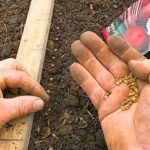
Beetroot tolerates cold snaps, therefore it is widely grown in the open field. When planting beets, you need to correctly determine the sowing time, choose a suitable place, prepare the beds, and do pre-sowing seed treatment.
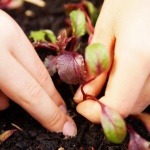
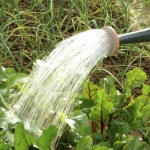
Soil requirements
Egyptian flat beet grows best in neutral acid soil. It can be grown on heavy soils, but the care of the crop should be several times higher.
Disease and pest resistance
Although the cultivar has a good immune system, with the wrong care, the crop can be exposed to some diseases.
Fomoz. It occurs when there is not enough boron. It can be identified by the appearance of brown spots on the leaves. Prevention will consist in feeding with microelements.
Cercosporosis. It mainly affects the leaves, but if you ignore it, you can lose the entire crop. To prevent the culture, it is sprayed with Agat-25.
Fusarium or Fusarium rot. A very early disease that appears in early summer on damaged or weakened plants. Most often this happens due to a lack of moisture.
Pests attacking beets:
aphid;
flea;
bear;
scoop.

